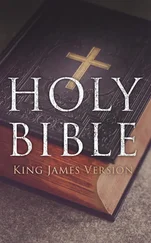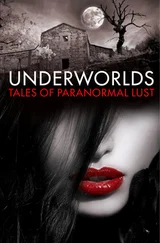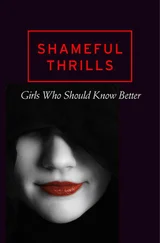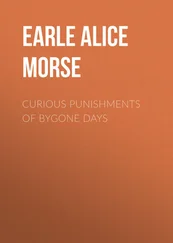Various - Bygone Berkshire
Здесь есть возможность читать онлайн «Various - Bygone Berkshire» — ознакомительный отрывок электронной книги совершенно бесплатно, а после прочтения отрывка купить полную версию. В некоторых случаях можно слушать аудио, скачать через торрент в формате fb2 и присутствует краткое содержание. Жанр: foreign_prose, на английском языке. Описание произведения, (предисловие) а так же отзывы посетителей доступны на портале библиотеки ЛибКат.
- Название:Bygone Berkshire
- Автор:
- Жанр:
- Год:неизвестен
- ISBN:нет данных
- Рейтинг книги:3 / 5. Голосов: 1
-
Избранное:Добавить в избранное
- Отзывы:
-
Ваша оценка:
- 60
- 1
- 2
- 3
- 4
- 5
Bygone Berkshire: краткое содержание, описание и аннотация
Предлагаем к чтению аннотацию, описание, краткое содержание или предисловие (зависит от того, что написал сам автор книги «Bygone Berkshire»). Если вы не нашли необходимую информацию о книге — напишите в комментариях, мы постараемся отыскать её.
Bygone Berkshire — читать онлайн ознакомительный отрывок
Ниже представлен текст книги, разбитый по страницам. Система сохранения места последней прочитанной страницы, позволяет с удобством читать онлайн бесплатно книгу «Bygone Berkshire», без необходимости каждый раз заново искать на чём Вы остановились. Поставьте закладку, и сможете в любой момент перейти на страницу, на которой закончили чтение.
Интервал:
Закладка:
After Richard's deposition and death, Isabella was detained by Henry IV., who would have married her to his madcap son, Prince Hal. Eventually, however, she married the Duc d'Orleans, this time choosing a husband much younger than herself.
A conspiracy against Henry IV. came to a head at Windsor, when the Duke of Exeter seized and searched the castle. Henry, however, had had timely warning, and had fled. "He rode to London and made him strong to ride on his enemies," and crushed the rebellion. The Castle during this reign held two unfortunate young prisoners, the Earl of March, whose only fault was his descent from an elder son of Edward III., Henry himself being descended from a younger branch; the other was one of the most unfortunate of the hapless house of Stuart, James Stuart. The king, his father, had sent him to France to complete his education. Henry, however, fearful of an alliance between France and Scotland, seized the Prince's vessel, and sent James to Windsor, declaring jocularly that England possessed good French teachers. Henry kept his word, and the young prince received a good education. He seems in every respect to have been treated as suited his rank, and was allowed plenty of freedom, sharing in all the festivities of the court. From his tower window he beheld and fell in love with the fair Joanna Beaufort, the king's niece, whom he eventually married. His return to Scotland marked the beginning of a sad and gloomy reign, and he was assassinated by his unruly nobles in 1437, to whom he had made himself odious by trying to curb their power.
In 1416, the Emperor Sigismund was present at the feast of St. George, bringing as an offering the heart of St. George, which remained in the chapel till the Reformation.
Whilst Henry V. was besieging Meaux he heard of the birth of his son. "But when he heard reported the places of his nativity, were it that he, warned by some prophesie, or had some fore-knowledge, or else judged himself of his son's fortune, he said unto the Lord Fitz Hugh, his trusty chamberlain, these words, 'My lord, I, Henry, born at Monmouth, shall small time reign and much get, and Henry, born at Windsor, shall long reign and all lose; but as God will, so be it.'" Although this unfortunate Henry of Windsor spent all his early years at his birthplace, the Castle fell into a very neglected condition. On his marriage with Margaret of Anjou, some necessary repairs were made for her reception, and during his illness, in 1453, Henry lived here.
Edward IV. was the first monarch interred at Windsor, where his little daughter Mary and his son George of Clarence, supposed to have been drowned in a cask of wine, had been buried before him. In 1484, the remains of Henry VI. were removed from Chertsey Abbey, and interred beside those of his rival. In 1789 some workmen came across the lead coffin of Edward IV. On opening it the entire skeleton was found, measuring 6 feet 3½ inches in length. A lock of brown hair taken from the coffin is in the Ashmolean Museum at Oxford. A bone of the leg was publicly sold by auction with the museum of a private collector a few years ago. It was understood at the time that the dishonoured relic was taken back to Windsor.
The poet Earl of Surrey was much at Windsor in his early life, and was imprisoned there in 1546. In one of his poems he gives a description of the large green courts, the stately seats, the secret groves, the wild forests, and other delights of the place. He was beheaded in 1547 for denying the king's supremacy in the church.
Queen Jane Seymour was buried at Windsor Castle with much pomp, a life-sized figure of the deceased was upon the pall, with a rich crown of gold upon her head, the hair all loose, a sceptre of gold in her right hand, and adorned with finger-rings and a necklace of gold and precious stones. In his will, Henry VIII. commanded that his body should be laid beside that of his "true and loving wife, Queen Jane."
Queen Elizabeth was very fond of Windsor Castle, and sometimes remained all the autumn and over Christmas. Between 1569 and 1577, more than £1000 a year was spent on improvements, which, remembering Elizabeth's parsimony, is very surprising. It is said that Elizabeth desired to see "Falstaff in love," and therefore it was that Shakespeare laid the scene of the "Merry Wives" at Windsor. As Elizabeth was very fond of riding, many a gay cavalcade of beautiful ladies and gallant gentlemen must have issued from the gates of Windsor, whilst many a magnificent pageant must have been held, and many must have been the love scenes enacted here, during her long reign.
There are several old descriptions of the Castle at this period still extant, and among the Harleian MSS., is one generally attributed to Stowe. "Upon the north syde and uttar part of whiche (describing the Terrace) lodgings also, betwene the same and the browe or fall of the hill which is very stepe and pitche, is an excellent walk or baye, rennynge all along the sayd buyldyngs and the syd of the castele borne upp and susteyned with arches and boteres of stone and tymber rayled brest highe which is in lengthe 360 paces, and in bredthe 7, of such and excellent grace to the beholders and passers by lyenge open to the syght even afarre off; that the statelynes, pleasure, beautie, and the use thereof semethe to contend one with another which of them should have the superioritie."
In 1642, the Parliamentary army occupied Windsor, and in the following year fifty-five political prisoners were lodged here under the command of Colonel Venn, who despoiled the chapel, and destroyed the deer in the Great Park. In 1647, Charles I. was a prisoner in the palace of his ancestors. After escaping from Hampton Court, and being confined in Carisbrook, he was brought back to Windsor in close custody of Colonel Whitchcott. The Governor was allowed £20 a day for his expenses. A month later, in January, 1649, he was removed to London. After his execution at Whitehall there ensued much discussion as to his place of burial, Windsor finally being chosen. A hearse, driven by the King's old coachman, and attended by four servants, conveyed the body to Windsor. The Governor refused to allow the use of the Burial Service in the Common Prayer-book. With much difficulty the vault of Henry VIII. and Jane, his wife, was discovered. The Duke of Richmond scratched on a piece of lead, "King Charles, 1648," the year being then reckoned to end on the 25th of March. The following day the King's coffin was brought out when "presently it began to snow, and the snow fell so fast that by the time the corpse came to the west end of the Royal Chapel, the black velvet pall was all white, the colour of innocency, being thick covered with snow." The coffin was placed on two trestles in the vault, and the velvet pall thrown in upon it. "Thus went the White King to his grave in the 48th year of his age," without ceremony or religious service.
In Charles II.'s reign the State apartments were remodelled, the architect being May, who probably only carried out the designs of Sir Christopher Wren. Verrio painted the walls and ceilings, and Gibbons carved the fittings. The £70,000 voted for a tomb to the memory of Charles I., was probably spent in these new buildings. Samuel Pepys visited Windsor in 1666, and was conducted to "where the late king is buried, and King Henry and my Lady Seymour. This being done to the King's house, and to observe the neatness and contrivance of the house and gates. It is the most romantique castle that is in the world. But Lord! the prospect that is in the balcone that is in the Queen's lodgings, and the terrace and walk, are strange things to consider, being the best in the world, sure; and so, giving a great deal of money to this and that man and woman, we to our tavern and there dined."
James II. lived much at Windsor. His daughter Anne here gave birth to a child, baptised Anne Sophia, who, dying soon after, was buried in Henry VIII.'s vault. James alienated his subjects by committing the fatal error of receiving the Papal Nuncio. It was here also that the Prince of Orange held the consultation which resulted in the flight of James.
Читать дальшеИнтервал:
Закладка:
Похожие книги на «Bygone Berkshire»
Представляем Вашему вниманию похожие книги на «Bygone Berkshire» списком для выбора. Мы отобрали схожую по названию и смыслу литературу в надежде предоставить читателям больше вариантов отыскать новые, интересные, ещё непрочитанные произведения.
Обсуждение, отзывы о книге «Bygone Berkshire» и просто собственные мнения читателей. Оставьте ваши комментарии, напишите, что Вы думаете о произведении, его смысле или главных героях. Укажите что конкретно понравилось, а что нет, и почему Вы так считаете.

![Various Various - Selected List of Nimmo, Hay, & Mitchell's Publications [1890]](/books/571841/various-various-selected-list-of-nimmo-hay-mit-thumb.webp)










